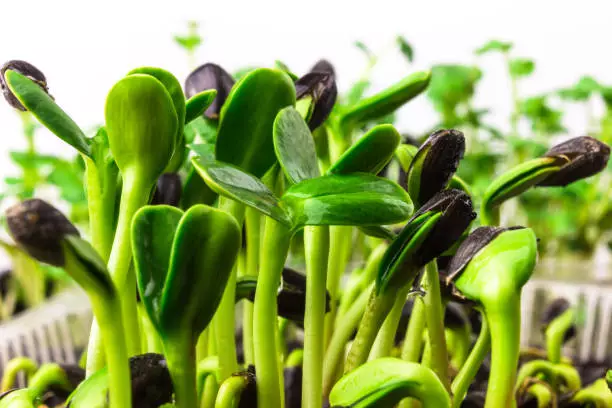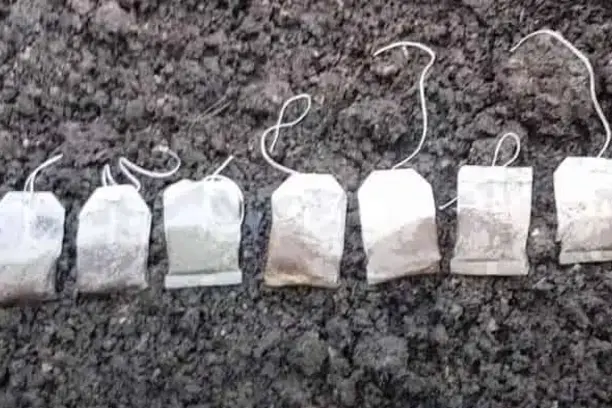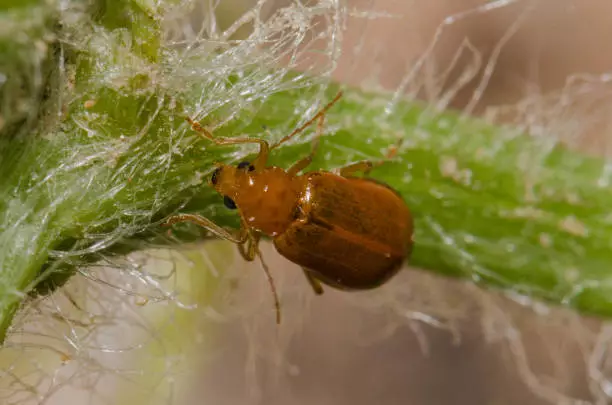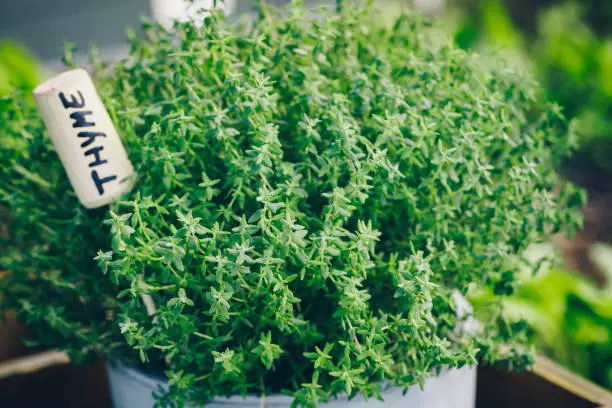A healthy-growing cactus plant should be green and have firm leaves and spines. When it turns white or pale, there could be many things you’re not doing right. Let’s dive right in through each one in detail to help you determine which one is relevant to your current situation and what you can do to restore its green color.
Cactus plants can turn white and pale due to frost damage, the growth of mold from poor ventilation, and loss of chlorophyll. Move the cactus to a warm place to counter frost burn, provide bright indirect sunlight, and improve airflow around the succulent to stop the plant from becoming pale.
What causes the cactus to turn white?
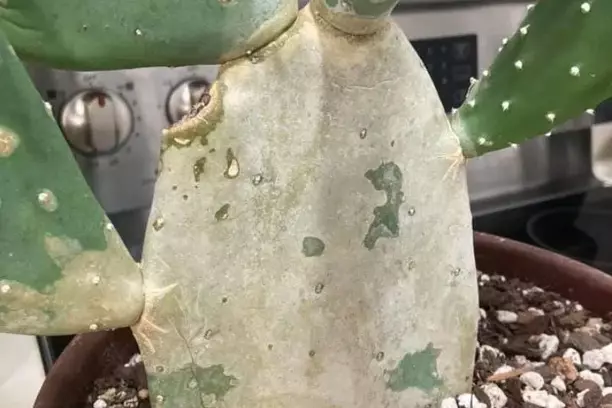
To come up with the right revival plan for a cactus plant that’s turning white, the first thing to do is to find out how it happened.
Here are the reasons why your cactus is turning white:
1. Frost damage
A cactus plant isn’t adapted to prolonged periods of extremely cold temperatures. If you live in a place with temperatures frequently dropping below 50°F, your cactus plant may turn pale. This loss of color is the plant’s way of responding to frost particles falling on their leaves, spines, and other parts. If temperatures don’t rise anytime soon, the plant may droop, wilt and eventually die.
2. Too much direct sunlight
While a cactus needs sunlight for photosynthesis, too much of it may cause sunburns. Prolonged exposure to the direct sun increases the evaporation rate on its leaves and spines. The plant may start turning white and crispy due to the harsh UV radiation from the sun.
3. Poor ventilation
A cactus plant may turn from green to white if it is in an area that isn’t well-ventilated. Such an area encourages the growth and multiplication of mold on the plant’s surface. It is this mold that accumulates on the leaves of your succulents to form a white fuzz on the leaves of the cactus, making it appear white.
RELATED: HOW TO GET RID OF WHITE FUZZ ON CACTUS
Eventually, the plant may rot and die due to insufficient airflow. If your plant is in a poorly ventilated room, consider relocating it outdoors. Also, removing the parts affected by molds will help them recover faster. You’ll need to wait a few weeks for it to regain its green color.
4. Fertilizer burn
If you’ve been overfeeding your cactus plant with fertilizer, it may turn white. The whiteness may result in yellowing, signifying that it’s getting too many nutrients. Its leaves may even fall off due to a lack of chlorophyll because too much fertilizer compromises a cactus plant’s ability to absorb sunlight, further inhibiting the process of photosynthesis.
5. Overwatering and underwatering
If you water your plant frequently (let’s say each week), it will start to appear unhealthy. Watering it once a month during summer, spring, and parts of fall is also not recommended. The best way to know if your plant needs water is by allowing the soil to dry out completely between each watering.
Besides turning white, an overwatered may wilt due to a high evaporation rate. You may also notice sliminess on the surface of the cactus pot.
RELATED: HOW TO REVIVE OVERWATERED CACTUS
On the other hand, an underwatered cactus will become pale and have curled stems and spines. The plant may eventually droop, turn yellow and lose its green color when it is placed in direct sunlight.
6. Moth infestation on cactus
If you’ve spotted the cactus moth (Cactoblastis cactorum) around your plant, it could be the reason it is turning pale. The bug’s larvae are feeding on the plant’s tissues. It’s easy to carry home a plant from someone with a history of the disease or during propagation mishaps.
7. The cactus has root rot disease
Root rot may cause a cactus plant to turn white due to high salt buildup, making it difficult for it to absorb water. It starts with root decay which later on, leads to bacterial infection. When such a plant is exposed to too much sun, its roots will rot.
How to fix a cactus that’s turning white
The proper fix for your cactus will depend on the main cause of discoloration or white coating. For example, if the succulent is suffering from mold, you can easily clean it up and kill the mold to restore its green color. But that’s not the only thing you can do to save your indoor plant:
Here are ways to fix a cactus that’s turning white:
1. Move your cactus indoors
If the succulent is turning white due to the cold of winter, move it to a warmer room that has some radiated heat. Now that your cactus has run out of coping mechanisms for freezing temperatures resulting in frost damage, give it time to recover after moving it back indoors. A warmer room will help the plant to come back to life.
You can remove the damaged parts and cover the healthier ones with a cotton sheet for extra warmth. Be careful not to cover it completely, preventing it from getting enough air. To prevent frost damage in the future, plant your cactus in a place that doesn’t come into contact with snow or ice.
2. Treat sunburn
After realizing that your cactus turns pale due to sunburn, consider moving it to an area away from direct sunlight. The place should have a shade-like structure. you can also spray some water on its leaves to compensate for the water loss. Avoid adding fertilizers to the soil as this may worsen or be a risk factor for sunburn.
3. Improve airflow for the cactus
If your plant has molds growing on its leaves, spines, or needles making it turn white, now is the right time to take in outdoors for fresh air. Give it some water and cut off any moldy parts.
If the succulent doesn’t have any mold on its surface, there is no need for pruning it. once it turns green again, place the pot in an area with good airflow, such as near a window. If you’re growing it outdoors, ensure it is in a shaded place.
4. Change the overfertilized potting mix
Reducing the amount of fertilizer you give to your plant can be challenging. it’s easy to miscalculate how much fertilizer needs to be removed. Changing the potting mix to cactus soil mix is the most effective solution you can consider for a cactus plant turning white.
After replanting the succulents in a new potting mix, prune away the top parts to prevent them from competing for water and nutrients with other young parts. In the future, fertilize your cactus once a year to prevent that white moldy appearance on top of the potting soil.
5. Water your plant on a need basis
A cactus doesn’t need frequent watering because it’s a drought-resistant succulent. It can store water on its leaves and stems for up to three weeks. During summer, water the cactus 2-3 times a month.
The type of container and soil mix can also affect the watering frequency of cactus plants. For example, plastic and glass containers are nonporous and can slow down the process of water drainage through the pot.
RELATED: HOW OFTEN TO WATER CACTUS
It’s worse if the container lacks holes on the sides and underneath it. You can prevent overwatering by using earthenware pots and getting cacti soil mix.
Before watering your plant, do a soil dryness test by sticking your index finger into the soil. if it’s totally dry, hydrate it by placing the pot in a pan or sink of water. This allows the bottom part of the soil to access the water first and also prevents you from pouring too much water. After ten minutes, the soil shall have drawn in enough water.
6. Get rid of the cactus moth
Grow your cactus away from plants that attract white moths to prevent it from turning white from their attacks. However, if you notice the succulent is already infested, killing the moth with an insecticide and applying proper care can get rid of the whitish stuff on your cactus.
Here are two methods of getting rid of white stuff caused by cactus moth:
Apply a moth-specific insecticide
When exterminating an adult moth, you should also focus on getting a product that will eliminate its larvae. There are several insecticides specifically designed to kill adult cactus moths and their larvae.
Prune all the dead leaves
The larva is the second stage of a bug’s life, which is why it should be the primary focus when killing the moth’s population. If the plant has several damaged parts, prune them away. The less food the larvae feed on, the more their population will starve.
7. Treat the cactus rot
When root rot is the reason why your cactus is turning white, start fixing it by cutting out all the damaged roots. Wear gloves for personal protection as the plant’s spines may poke you. Clean the cutting tool with alcohol or dilute hydrogen peroxide to kill all the fungus and prevent it from spreading to healthy parts of the succulent.
Repot the cactus using a new soil that has been treated with fungicide. Now you can water your plant and place it in a well-aerated place. In a few weeks, the succulent should regain its green-coloring matter. If the white and yellow colors don’t disappear after two weeks, it’s time to start over with a new plant.
